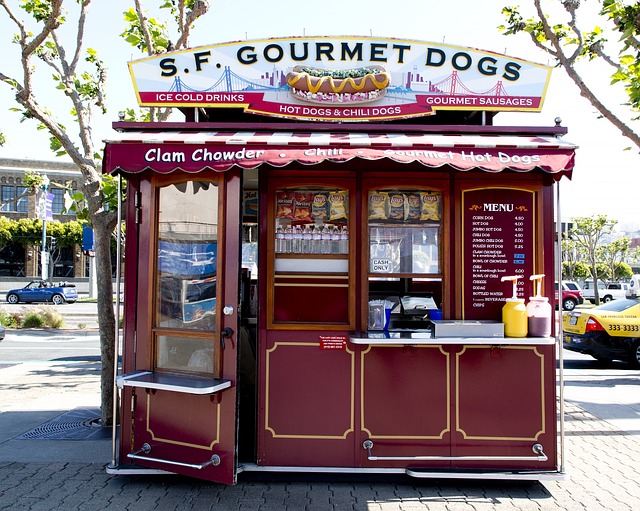A visit to New York’s Coney Island is incomplete without eating a hot dog. The grilled sausage served on a sliced bun with spicy mustard and sauerkraut is part of New York’s history and 1.4 million of them are sold daily at hot dog stands and restaurants all over the city.
Like so many of New York’s classics, the hot dog was the invention of European immigrants. Nathan Handwerker from Poland and Karl Feltmann from Hannover both claimed to be the original inventor of the hot dog. Even though Nathan’s Famous is now synonymous with hot dogs, it was actually Feltmann who first served frankfurters on sliced buns in 1869. He came up with the idea when he thought of how he could best sell his sausages from his push wagon to the hungry beachgoers of Coney Island. He called his sausages red hot and they became an instant hit. In 1871 Karl Feltmann, now Charles Feldman, opened Feltman’s Restaurant and Beer Garden in 1871 which became a mini empire with a hotel, beer gardens, restaurants, food stands, a cinema and amusements.
Nathan Handwerker actually worked at Feltman’s Restaurant before launching his own hot dog empire. His job was to slice the buns and deliver the sausages to the grilling stations. With savings of $300 he and his wife Ida opened their own stand selling the red hots for 5 cents instead of Feltman’s 10 cents. Nathan seasoned the sausages using a secret blend of spices handed down from his wife’s grandmother. Very soon he sold more than 75,000 hot dogs each weekend.
Nathan’s original stand grew and grew, until it took up almost the entire block. But it wasn’t until his son, Murray, took over the business in 1968 that Nathan’s Famous began to extend the brand. Today, there are more than 300 Nathan’s Famous restaurants, and the hot dogs are sold in supermarkets in all 50 states.
But how did the word hot dog come about? There are various stories. Some even claim it came from the suspicion that sausages sold by German immigrant butchers contained actual dog meat!
Questions:
1. How many hot dogs are sold every day in NY?
2. Who first sold sausages on a bun on Coney Island and in which year?
3. Which country was Nathan Handwerker from?
4. What was the connection between Feltman and Handwerker?
5. How many Nathan’s Famous restaurants are there in the US today?

Answers:
1. 1.4 million
2. Karl Feltman in 1869
3. Polan
4. Handwerker worked for Feltman
5. more than 300



